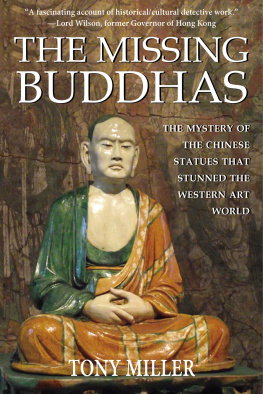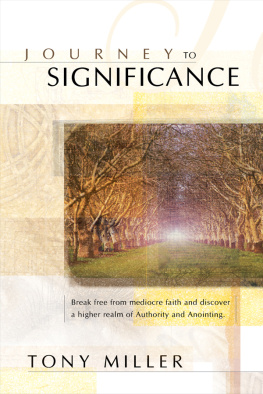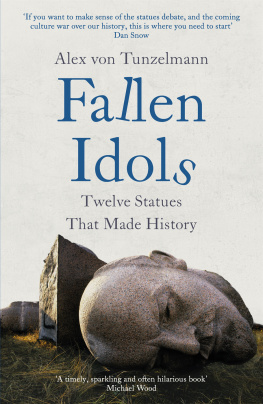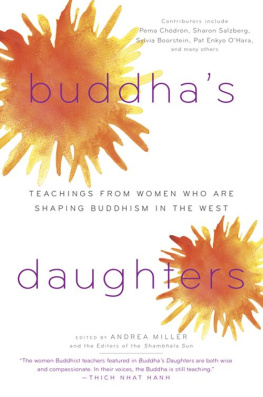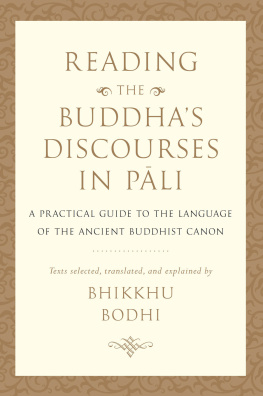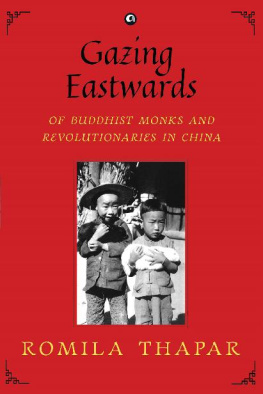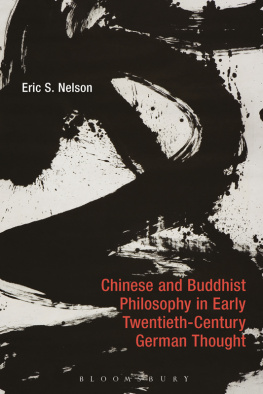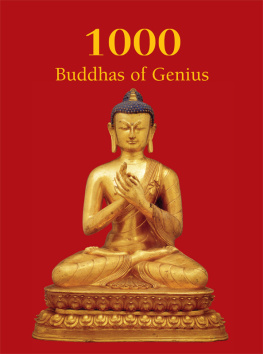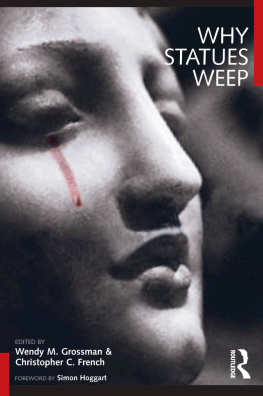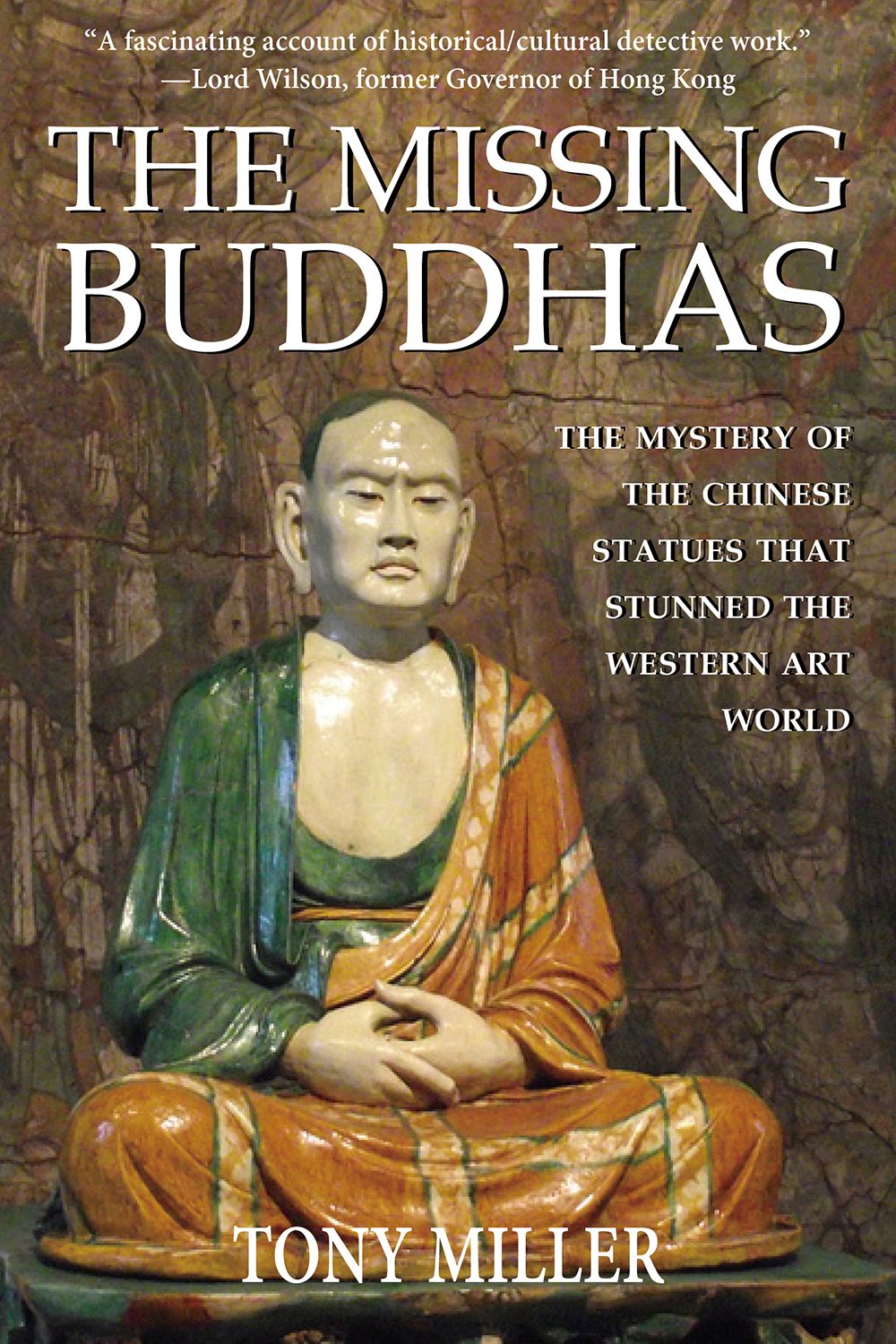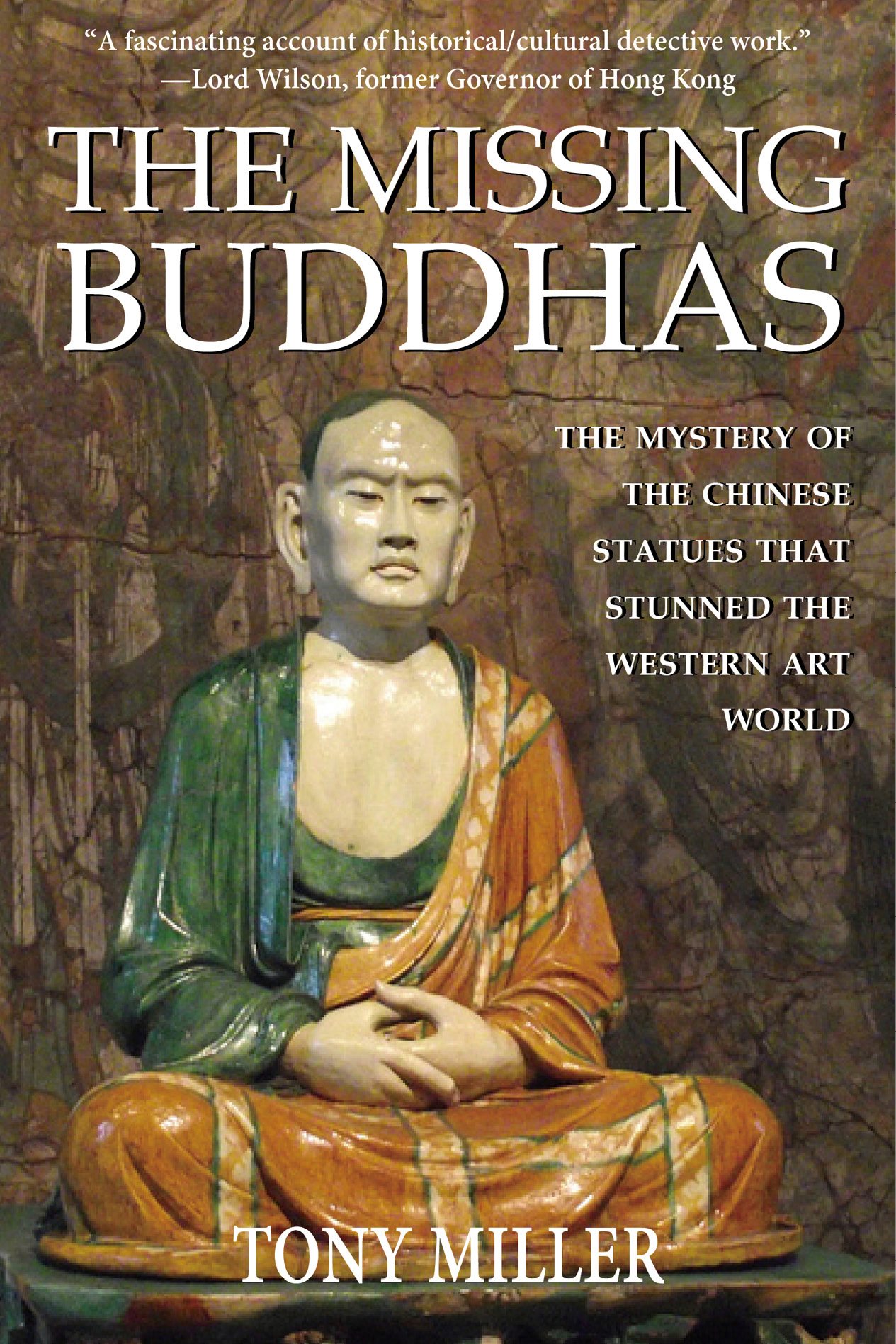
Advance Praise for
The Missing Buddhas
A fascinating detective story that traces the origins, ownership and sale of a unique set of lost Buddhist treasures - an exciting read.
Rose Kerr, Art Historian and Former Keeper of the Far Eastern Department at the Victoria and Albert Museum, London
The author has unlocked the mysteries surrounding a unique set of life-size glazed pottery luohan sculptures, each with an outstanding individual and human portrayal. With strong evidence, he eschews the former dealers stories and hearsays and instead provides reliable new verdicts for their provenance and patronage. Written in plain language the book is not only for scholars but also for all lovers of Chinese art.
Peter Y. K. Lam, Honorary Fellow, Institute of Chinese Studies. The Chinese University of Hong Kong
The Missing Buddhas reads like a great murder mystery. For anyone interested in Chinese antiquities and art, the study and journey of these porcelain figures is a must read. The feel for the people involved in the search, the intrigue and acquisition of these treasures is fascinating. Tonys research is meticulous and extensive, covering a very wide range of source material. It is an extraordinary story. All I can say is well done Mr. Miller!
Tad Beczak, Chairman of Old Peak Investments Limited, Former Publisher and Deputy Chairman of the SCMP Group
A fascinating account of historical/cultural detective work which will leave the rest of us deeply impressed by a blend of meticulous scholarship and a sense of wonder at the powerful beauty of these 900 years old Buddhist statues. Where were they made? Why did they disappear? And how did they start to appear on the Peking antiquities market in the early part of the last century? Tony Miller tackles all the historical puzzles. But even more fascinating is the untangling of the skulduggery that was a major feature of the Peking art market. This book should have every museum, including the specialist Muse Guimet, where the last statue now is, re-examining their records and their attributions of the origins and provenance of these statues.
David Wilson, Baron Wilson of Tillyorn, former Governor of Hong Kong

The Missing Buddhas
By Tony Miller
ISBN-13: 978-988-8769-00-1
2021 Tony Miller
Cover image by kind permission of the British Museum;
Trustees of the British Museum
HISTORY / Asia / China
EB146
All rights reserved. No part of this book may be reproduced in material form, by any means, whether graphic, electronic, mechanical or other, including photocopying or information storage, in whole or in part. May not be used to prepare other publications without written permission from the publisher except in the case of brief quotations embodied in critical articles or reviews. For information contact info@earnshawbooks.com
Published by Earnshaw Books Ltd. (Hong Kong)
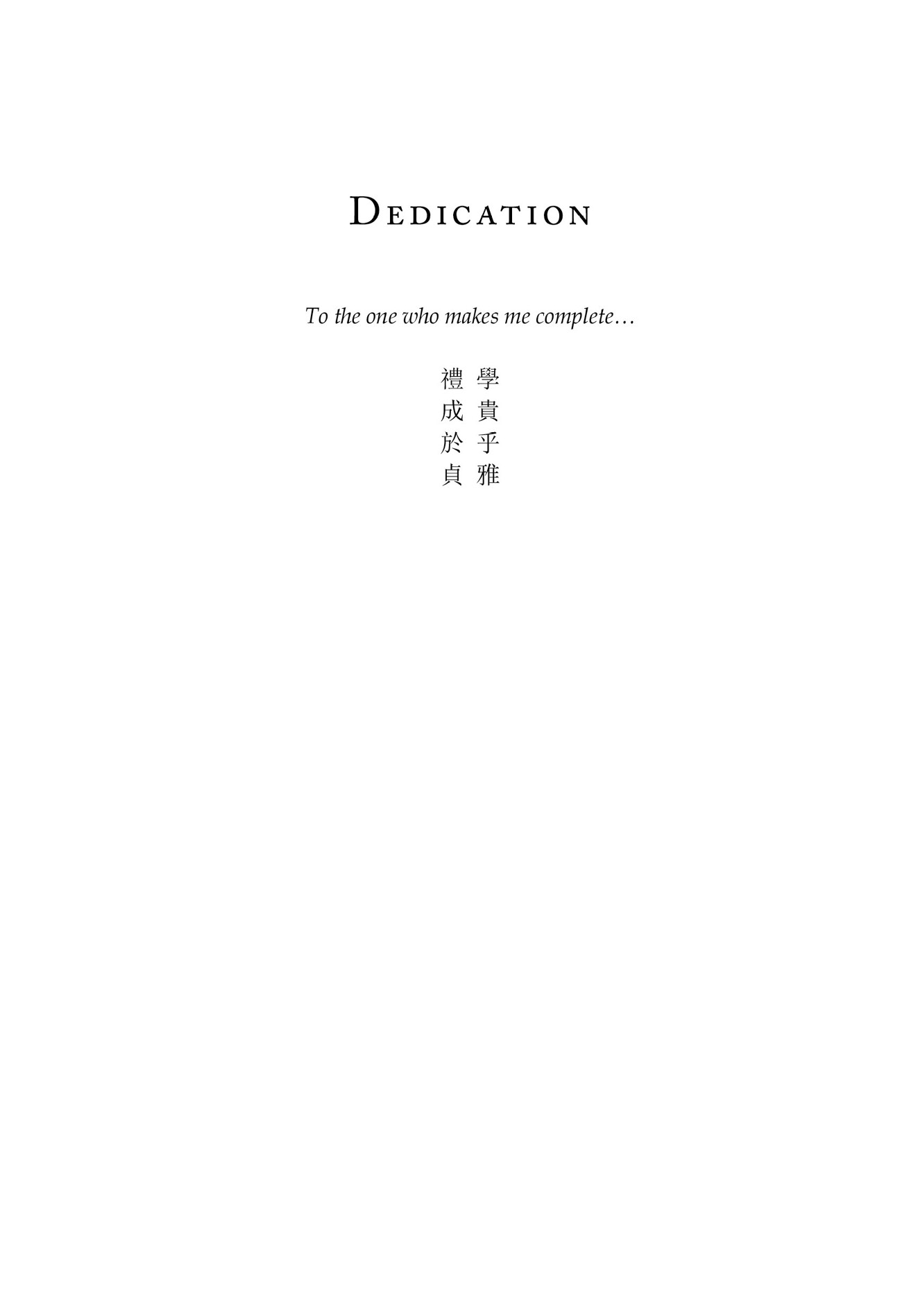
Note on Title and
Transliteration
An innate pedantry prompts the author to state up front that this is categorically not a book about missing Buddhas the statues whose story is told here are actually disciples of the Lord Buddha, not images of Buddha himself. So, why not use the Chinese word for these disciples? Well, for one, the term Luohan might not be familiar to many and a title such as The Missing Luohans would therefore not have resonated. More particularly, the mystery of these statues is bound up with the story of the German dealer who claimed to have found where they were hidden, and reported seeing engraved on a nearby stone stele the words:
All these Buddhas came from afar.
This enigmatic remark has puzzled many people over the years because, whether they came from near or far, the statues were all Luohans. The German dealer must have known the difference, but he seems to have sacrificed accuracy for familiarity in order not to confuse his audience. I have followed his example. Actually, this book should really have been called The Legend of the Yixian Luohans, but that would have required an even lengthier explanation.
Several systems for transliterating Chinese names and place names were employed before the Chinese Governments adoption of Pinyin . This can cause confusion. Where quoting from older sources, the author has chosen to leave these as originally rendered, relying on context to make matters clear, but annotating where the thread would otherwise be lost. There are, however, two terms that require early clarification:
- Arhat is the Indian word, derived from Sanskrit, for the disciples of the Lord Buddha chosen by him to protect the Law. The Chinese translation for this name in modern pinyin is Luohan (), but it frequently still appears in its older form of Lohan; and
- Yixian () is a county to the southwest of Beijing where the terracotta Luohans were allegedly found. At the beginning of the 20 th century, it was called I-chou (), which was sometimes rendered as Ichou. Today the Luohans are generally referred to as the Yixian Luohans, but the older names are used in earlier writings on them and sometimes reappear even today.
Foreword
The Lohan represents art which is intelligible in all lands and in all ages.
R.L. Hobson
I do not think that I am alone in the sense of shock I experienced on first encountering the Luohan in the British Museum. It was not a shock of horror, rather one of wonder. Here was a man, a monk, who had been dead for a millennium or more, who was yet reaching out, not reaching out to me but to something beyond me. He was not speaking, but everything about his poise and expression spoke to me of that beyond as something infinitely far off and yet attainable. One did not have to know anything about Oriental religions, or Asian sculptural conventions to grasp that this was one of those rare examples of great art that communicates across time and space and cultures.
It would be several years before I caught up with the monks brethren in the Metropolitan Museum, in New York. I had not gone in search of them; I had not known they were there, but as soon as I saw them I recognized them. Quite when I began puzzling about them is lost to me; the unconscious mind works in curious ways. However, at some point in my researches into other matters something triggered the thought I wonder how many of them there are? and I dug a few books off the shelves of our library and quickly found that what I had experienced on first encounter at the British Museum was no less profound than that of its former curator:
It is no conventional deity which sits before us. The features are so human as to suggest an actual portrait, but for the supernatural enlargement of the ears in Buddhist fashion. The contracted brows bespeak deep concentration; the eyes, dreamy yet wide awake, look through and past us into the infinite; the nostrils are dilated in deep breathing; the lips compressed in firm yet compassionate lines. It is the embodiment of the Buddhist idea of abstraction and aloofness; yet it lives in every line, the personification of mental energy in repose.
Exhausting references in our own books, I went online to ask again How many? At which point things became more confused and my attention was distracted by more immediate tasks. Whether I recognized it or not at the time, however, I was already hooked. The monks had grown in number, even if there seemed to be disagreement about exactly how many there were; the lyrical praises heaped on them by curators and scholars confirmed my amateur judgement as to their quality; and yet they were nagging at me, and asking me a host of different questions.

